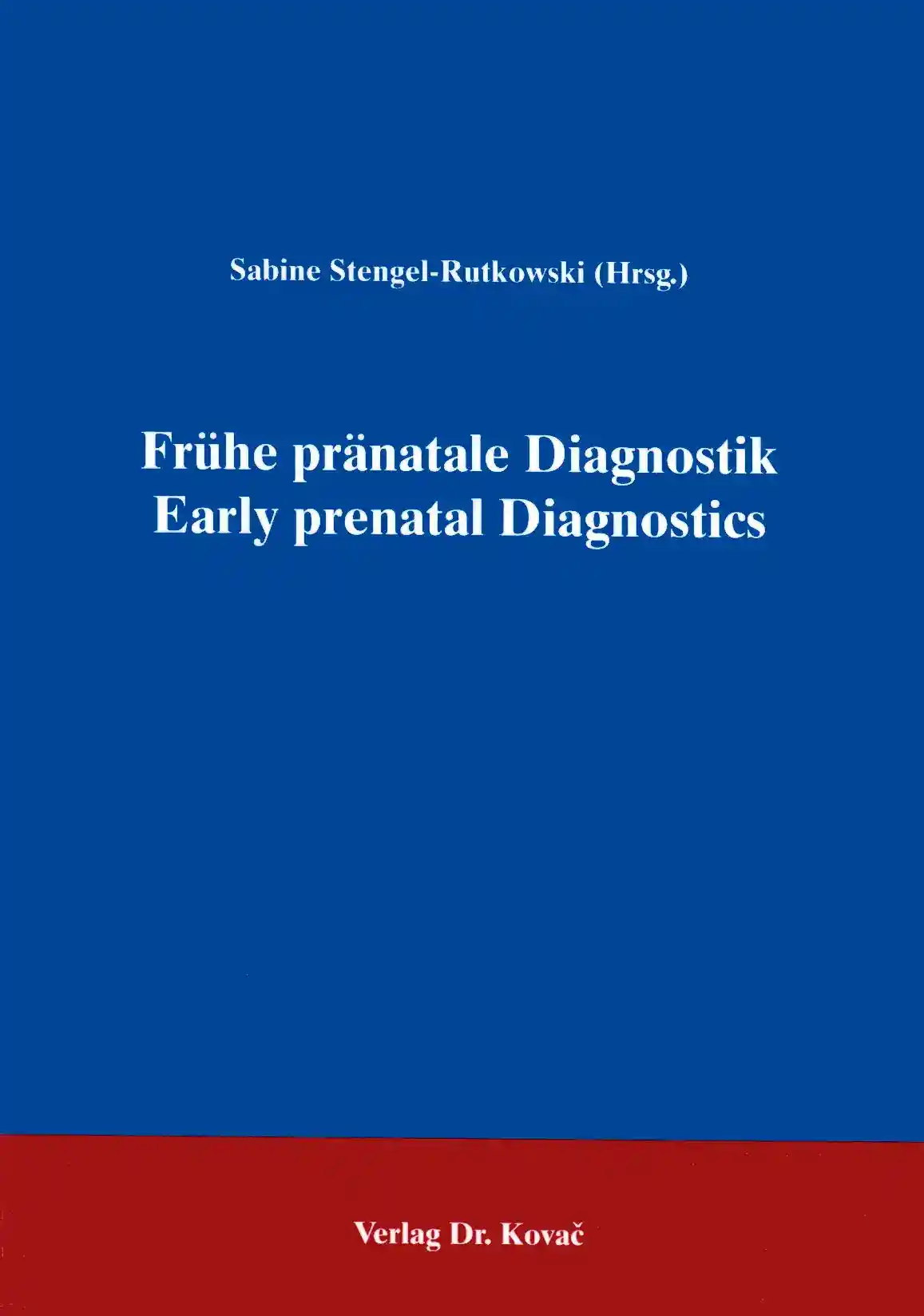Sabine Stengel-RutkowskiFrühe pränatale Diagnostik
Proceedings über das Abschlusskolloquium des deutschen Diagnostics Gemeinschaftsprojekts
HIPPOKRATES – Schriftenreihe Medizinische Forschungsergebnisse, volume 24
Hamburg 1995, 220 pages
ISBN 978-3-86064-200-9 (print)
About this book deutschenglish
Since its early beginnings more than 20 years ago, prenatal diagnostics has become a permanent part of medicine, dealing with genetically determined risks for diseases and congenital handicaps. With the increasingly differentiated and precise methods that are becoming available, diseases and development retardation syndromes can be identified or excluded at the phenotypic and/or genotypic level. In parallel to the refinement of existing diagnostic methods and the development of new ones, invasive procedures for tissue sampling in early pregnancy have also been developed, including chorionic villus biopsy. In addition, non-invasive methods such as the triple test, have become available as well, leading to specific indications for prenatal diagnostic interventions. These efforts towards achieving diagnostic tools as accurate as possible and applied as early as possible in pregnancy, after an intervention involving the lowest possible risk have not, however, been able to solve the ethical and psychological dilemma of pregnancy termination as an option after the prenatal demonstration of a foetal disease or syndrome. This dilemma is also not solved by a terminology, such as "medical indication", "prevention" or "therapy" ("therapeutic abortion"), in an attempt to include this medical action within the context of other medical actions dedicated to preventing or resolving human suffering. Prenatal diagnostics have moved outside this context - a context that usually saves the treating physicians from an ethical conflict of goals. In the field of prenatal diagnostics however they can neither derive their actions from the available medical or genetic facts, nor assume that all patients will have the same goal or that the patients’ goals will be identical to the physicians’. In future it will be important to see how developments in the direction of non-invasive prenatal diagnostic procedures will be handled. Diagnostic procedures of this type may lead to a big boom, possibly prompting more unreflected use of prenatal diagnostics than present invasive methods. The physicians need to be alert to the requirements for accountable framework conditions, in order to ensure that prenatal diagnostics can be applied in practise without causing damage at the same time. This selection of studies by different physicians and scientists is part of a necessary discussion on possibilities and consequences of prenatal diagnostics.Keywords
BehinderungChorionzottenbiopsieDiagnosemethodenFötusKrankheitpränatale DiagnostikSchwangerschaftSchwangerschaftsabbruchSyndromIhr Werk im Verlag Dr. Kovač

Möchten Sie Ihre wissenschaftliche Arbeit publizieren? Erfahren Sie mehr über unsere günstigen Konditionen und unseren Service für Autorinnen und Autoren.
